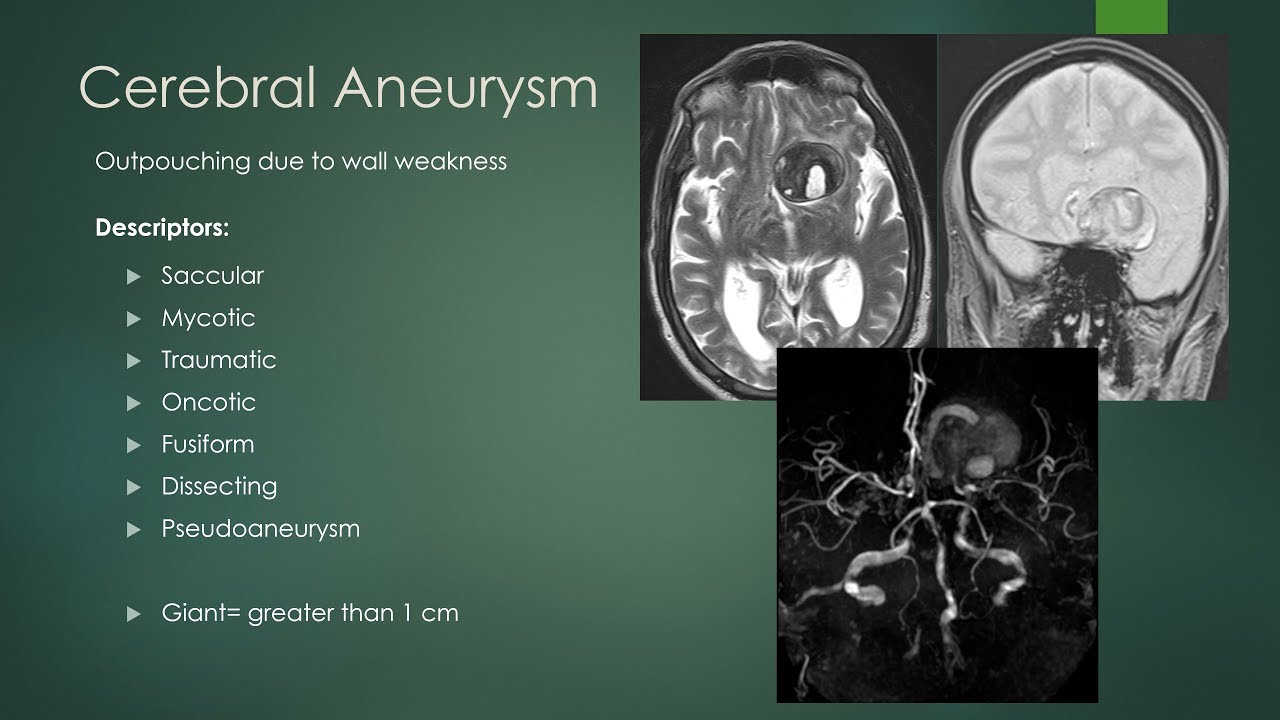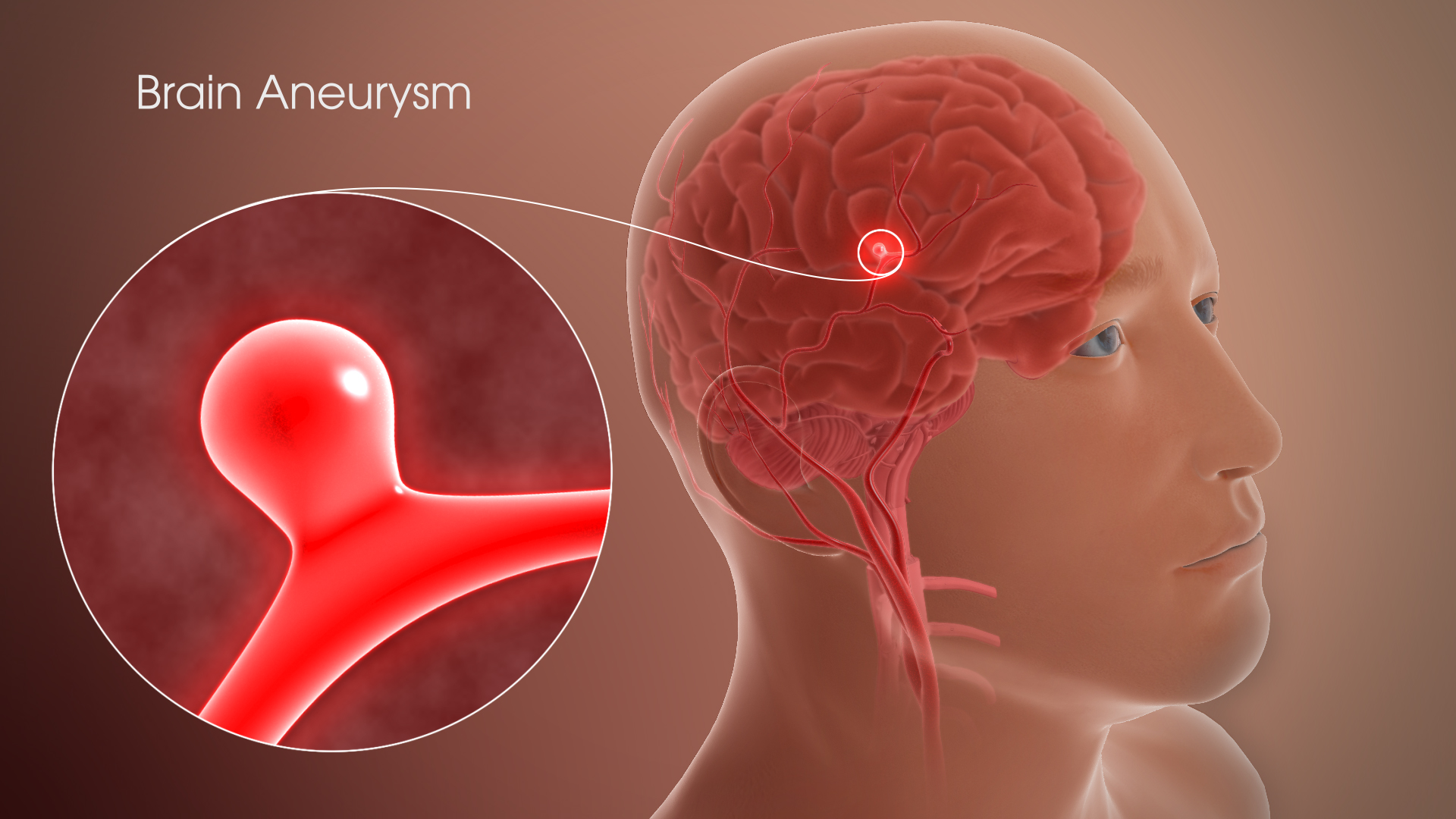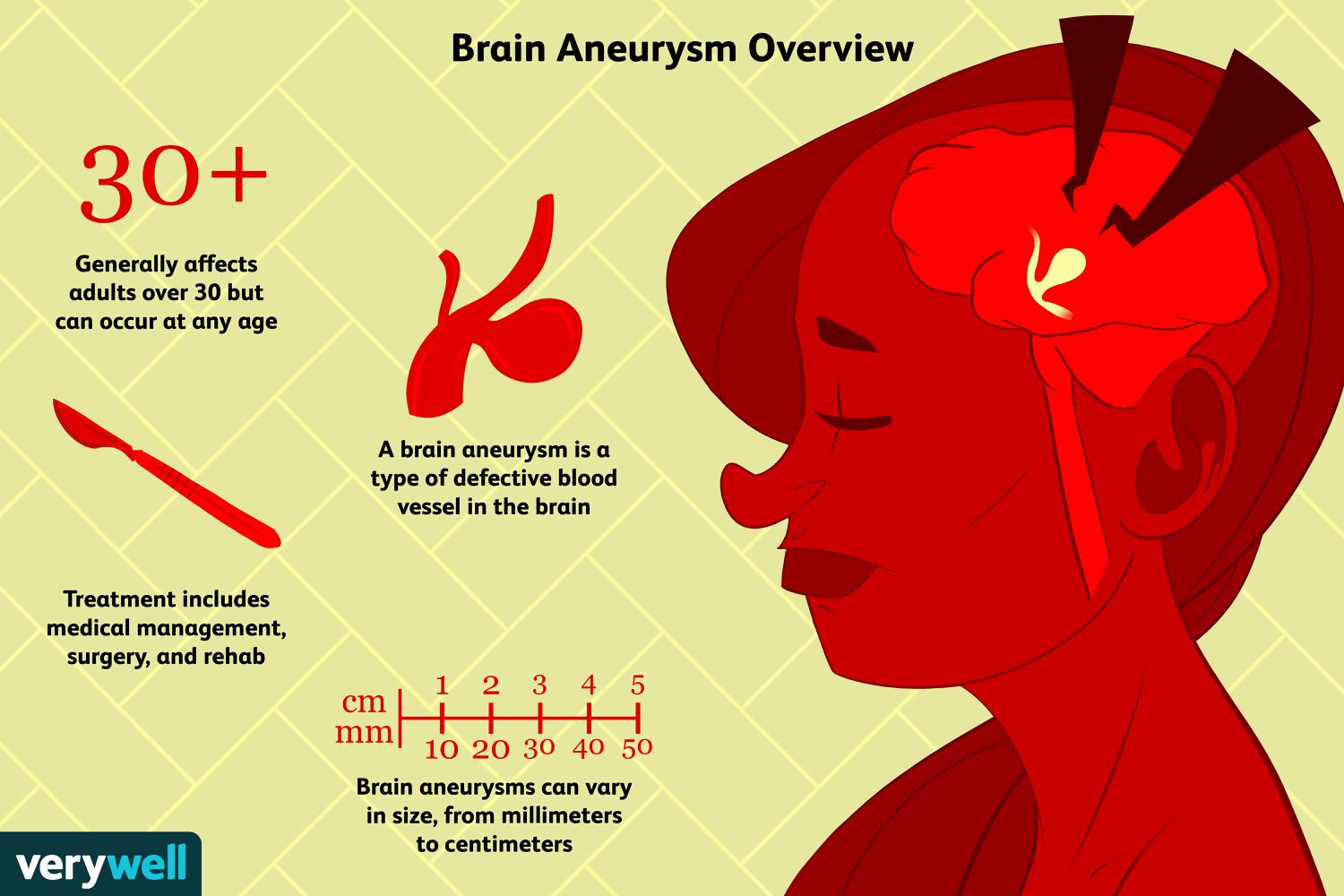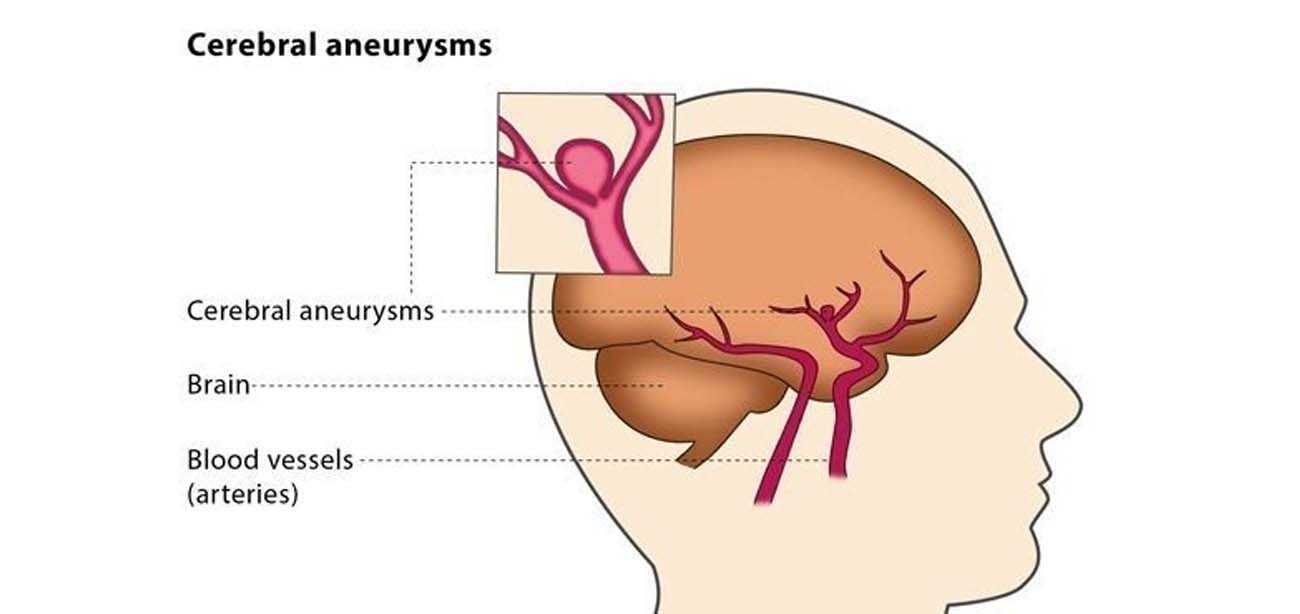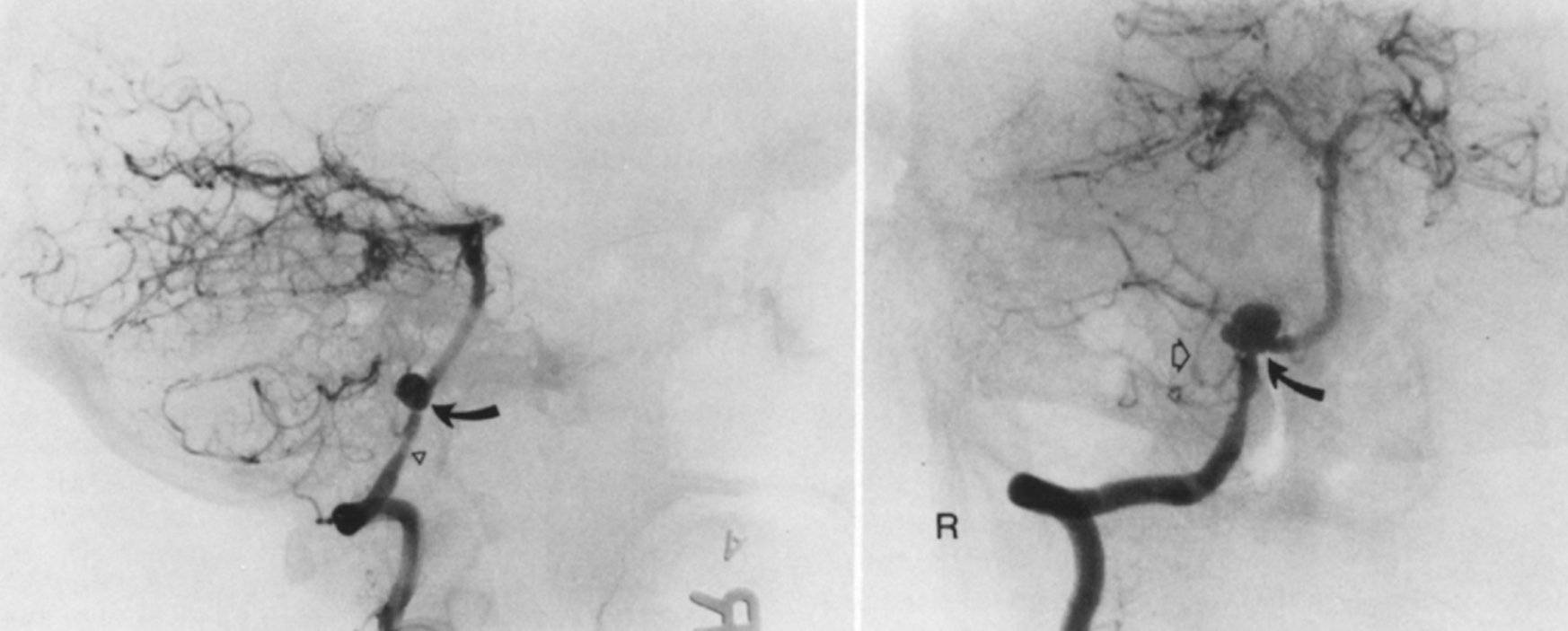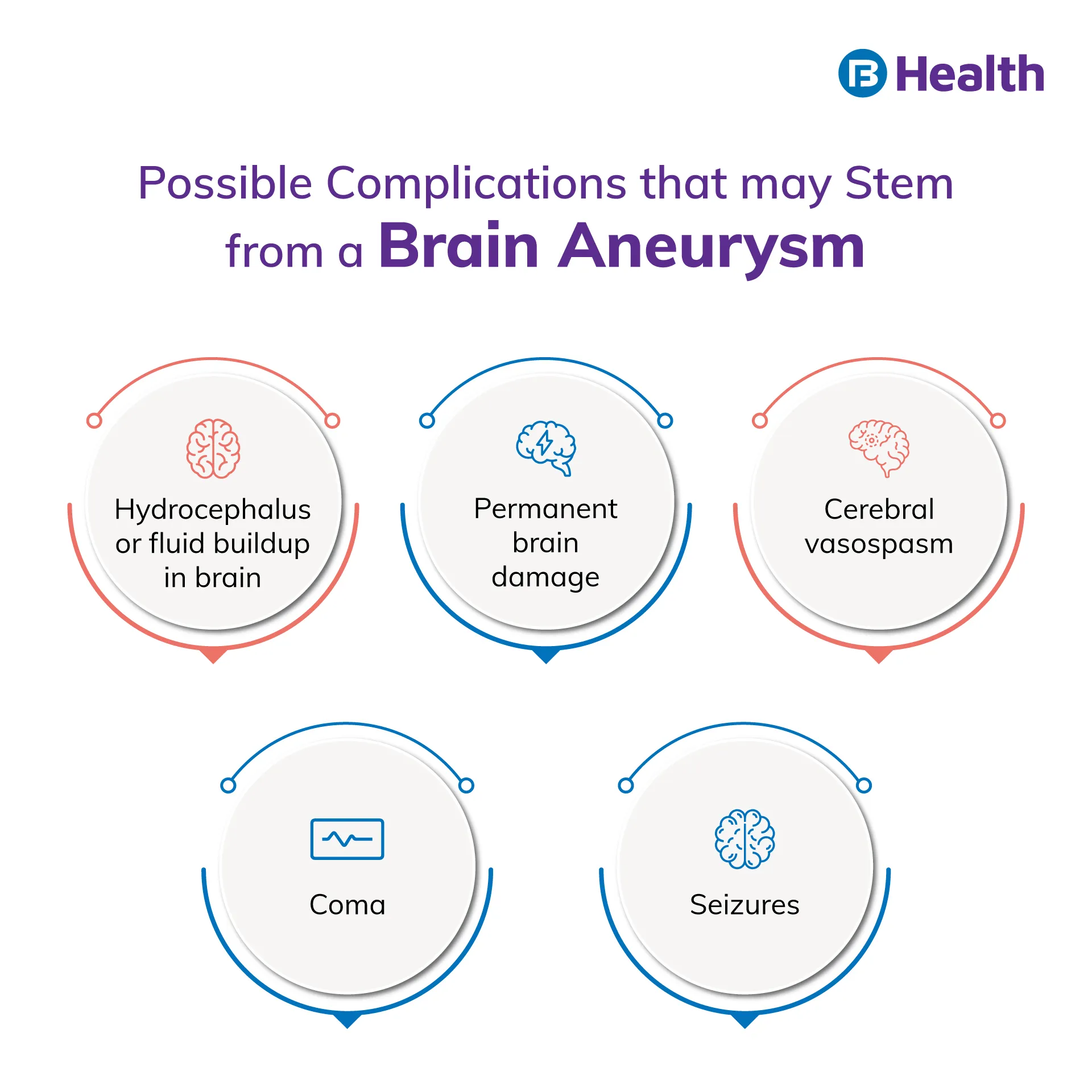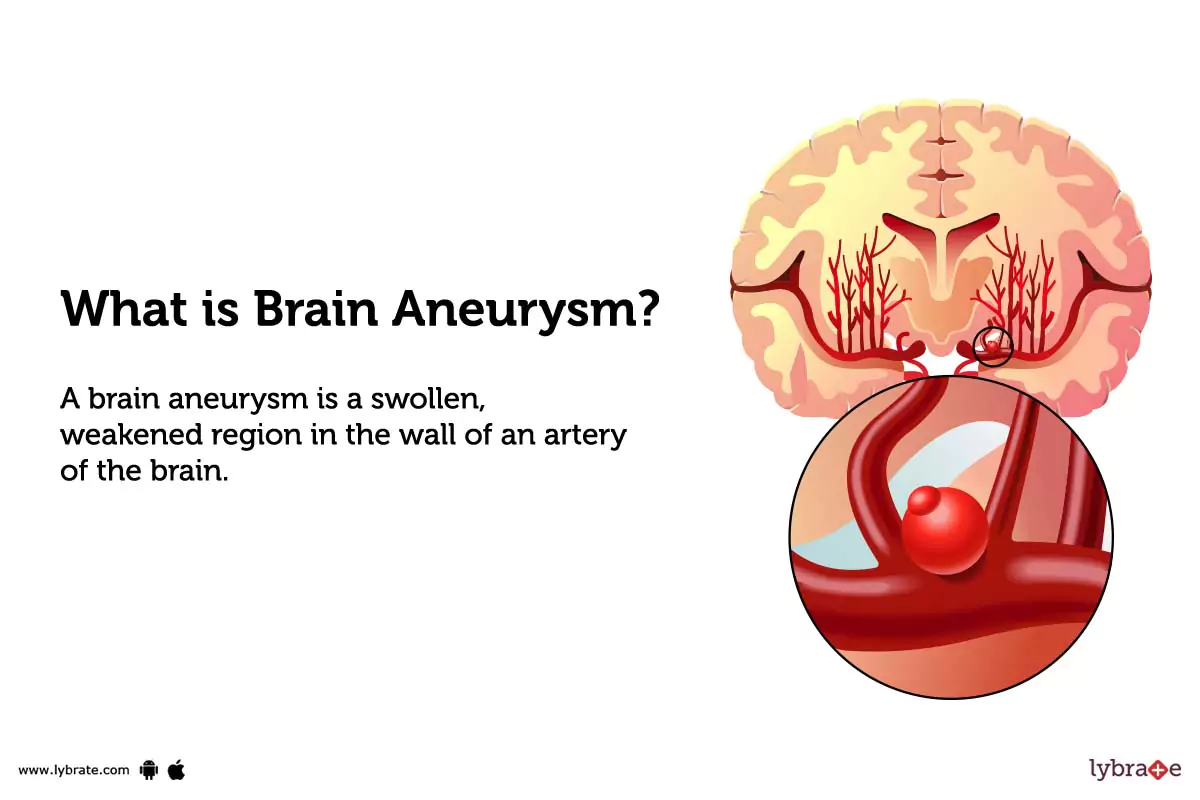
Key facts
- A brain aneurysm is a bulge in an artery in your brain.
- If an aneurysm leaks or bursts, it can cause a stroke (bleeding on your brain).
- Many people have a brain aneurysm without realising it.
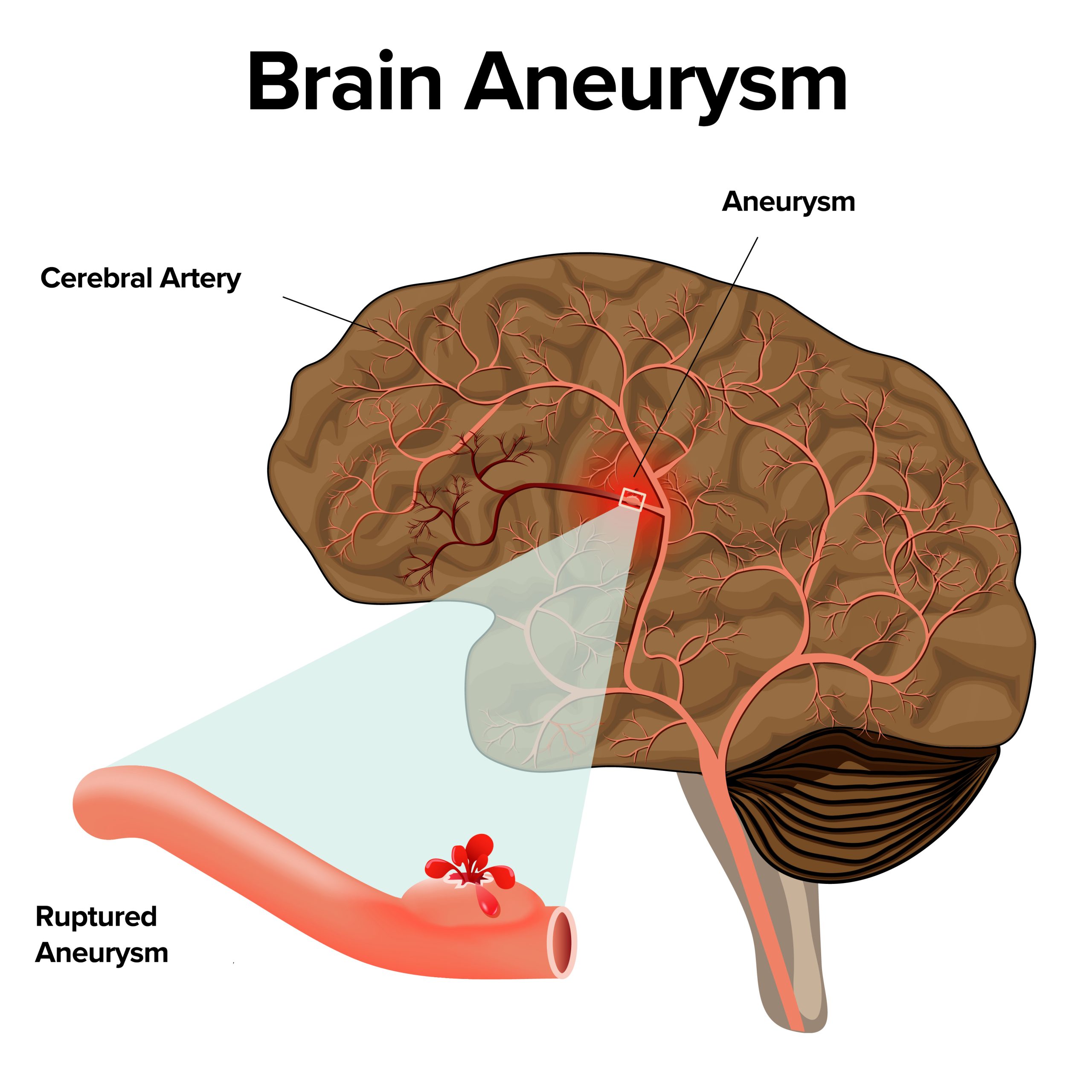
What is a brain aneurysm?
A brain aneurysm — cerebral aneurysm or berry aneurysm — is a bulge in an artery in your brain. It’s caused by a weak spot in your artery wall.
If a brain aneurysm leaks or bursts, it can cause haemorrhagic stroke (bleeding on your brain). This can quickly become life threatening.
About 2 people in 100 have a brain aneurysm. Some people are born with a weakness in an artery in their brain. In other people, health conditions cause the aneurysm, such as:
- high blood pressure
- atherosclerosis
- a head injury
Aneurysms are more common in adults and in females — although anyone can have a brain aneurysm.
Aneurysms can also occur elsewhere in your body.
What are the symptoms of a brain aneurysm?
Many people have a brain aneurysm without realising it. It may only be found when you have a brain scan for another reason. Usually there are no symptoms.
Sometimes, if an aneurysm becomes very large, it can cause:
- headaches
- vision changes
When an aneurysm bursts, it causes a sudden, very bad headache.
What causes a brain aneurysm?
Aneurysms develop when your artery wall is weak.
Brain aneurysms are most common in the major arteries found along the base of your skull. They are also called intracerebral aneurysms or intracranial aneurysms.
There are different types of brain aneurysm:
- saccular (berry) aneurysm: the most common type of aneurysm, which can cause bleeding on the brain
- fusiform aneurysm: this type is less likely to burst
When should I see my doctor?
If you have a sudden, severe headache, call triple zero (000) and ask for an ambulance.
How is a brain aneurysm diagnosed?
A brain aneurysm is often found during a brain scan such as CT scan or an MRI. These scans may also be done if the aneurysm bursts, to show where the bleeding is.
If an aneurysm is suspected, you may have an angiogram. This is where a thin tube is inserted into an artery. A special dye is used to show detailed information about the aneurysm.
Sometimes your doctor might do a lumbar puncture. This involves taking a sample of the fluid that surrounds your brain and spinal cord using a thin needle. This is to confirm whether you have a burst brain aneurysm.
How is brain aneurysm treated?
Treatment of an unruptured aneurysm may depend on its size and location. If your aneurysm is very small, you will probably have:
- regular monitoring scans
- treatment for other conditions, such as high blood pressure
- surgery
Sometimes your doctor may suggest surgery to prevent your aneurysm bursting in the future. This involves putting a tiny metal coil into the aneurysm. This causes a blood clot, which prevents your aneurysm from bursting in the future.
If your aneurysm has burst, you will have surgery to clip the aneurysm so that it does not bleed again.
You may also need other treatments for complications, which can include:
- reduced blood flow in your brain
- fluid on your brain (hydrocephalus)
- high pressure in your brain
- seizures (fits)
- anaemia
- heart or lung problems
Can a brain aneurysm be prevented?
You can reduce the chance of some brain aneurysms forming by:
- quit smoking
- reducing the amount of alcohol you drink
- eat a healthy diet and getting plenty of exercise
You are more likely to get a brain aneurysm if you have:
- a family history of subarachnoid haemorrhage (stroke)
- a connective tissue disease, such as Ehlers-Danlos syndrome or Marfan syndrome
- a previous subarachnoid haemorrhage (stroke)
If you have been diagnosed with a brain aneurysm you can take steps to stop it from bursting:
- quit smoking
- reduce your alcohol intake
- treat high blood pressure
- do not use stimulant drugs like cocaine
- eat a healthy diet and get plenty of exercise
Complications of a brain aneurysm
About 1 in 10 people who have a brain aneurysm will have another.
When a brain aneurysm bursts and bleeds, it can cause a stroke.
If the bleeding happens in the space around the brain, it is called a subarachnoid haemorrhage. If it occurs in the brain itself, it is known as an intracerebral haemorrhage.
When an aneurysm bursts, it is very dangerous. It’s marked by a sudden, very bad headache.
Other symptoms of a burst aneurysm are:
- nausea and vomiting
- loss of consciousness (briefly or for a long time)
A burst aneurysm can lead to sudden death or permanent disability.
